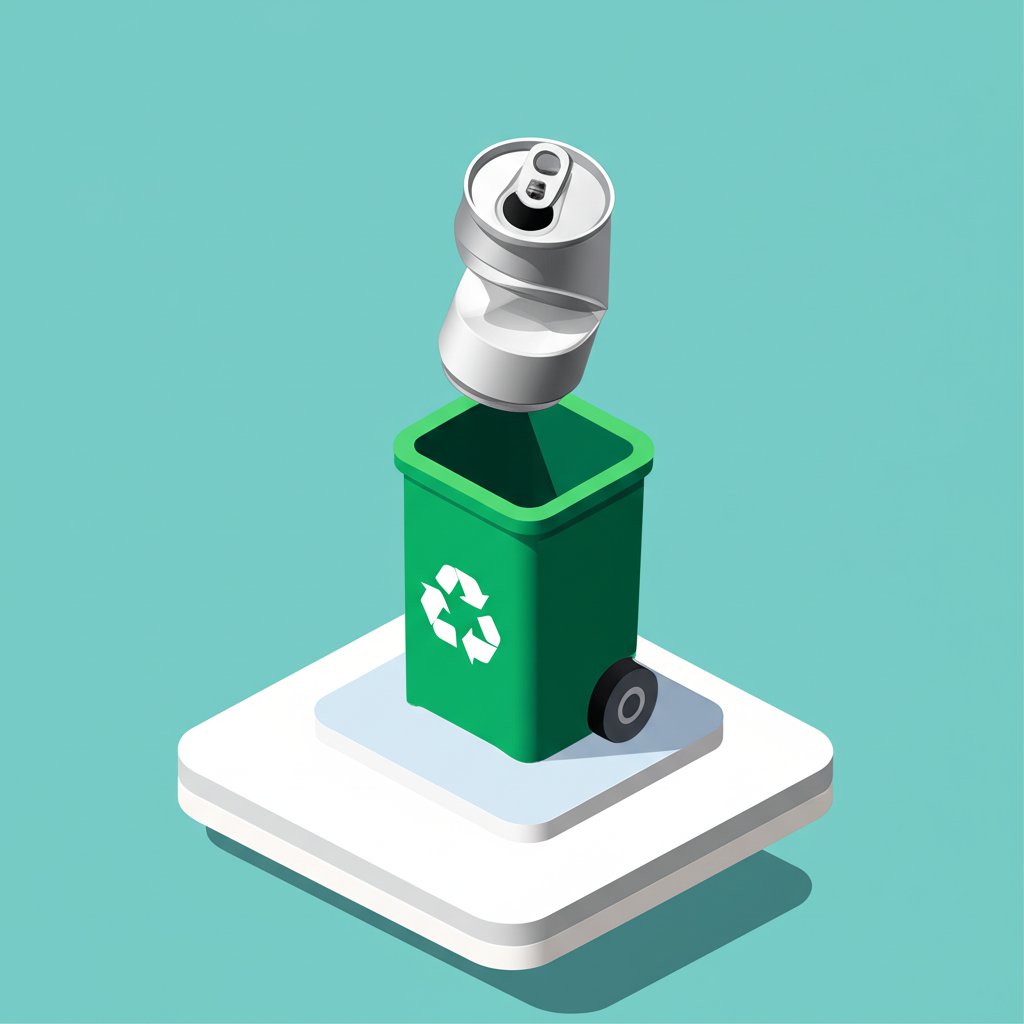In a world increasingly focused on sustainability, the humble aluminum can stands as a quiet titan of environmental innovation. Often taken for granted, these ubiquitous containers hold a fascinating story of engineering ingenuity, remarkable resource efficiency, and unparalleled recycling potential. Far from being just a convenient vessel for your favorite beverage, aluminum can packaging is at the forefront of the circular economy, offering surprising advantages that challenge common perceptions about its environmental impact.
Get ready to peel back the layers and discover the hidden eco-secrets, incredible aluminum can sustainability, and the champion status of recycling aluminum cans that make them a profoundly impactful choice for both consumers and the planet.
The Unseen Advantages of Aluminum Can Packaging
When selecting packaging materials, few options rival the inherent benefits of aluminum. Its unique properties make it an ideal choice, not just for convenience, but for superior product protection and logistical efficiency, cementing its role in modern consumer goods.
Lightweight Design and Transport Efficiency
One of the most remarkable aspects of aluminum can packaging is its incredibly lightweight nature. Did you know that the sides of an aluminum can are often as thin as a human hair? This exceptional thinness, achieved through advanced manufacturing techniques, is a testament to material science. This allows for significantly more cans to be produced from a given amount of aluminum – approximately thirty cans today from a single pound of metal, a notable increase from twenty cans just two decades ago.
This commitment to lightweighting translates directly into substantial environmental benefits. Lighter packaging means less fuel consumption during transportation, reducing associated greenhouse gas emissions across the supply chain. From factory to shelf, and ultimately to the consumer, the intrinsic lightness of aluminum cans plays a critical role in minimizing its overall carbon footprint.
Superior Product Protection and Shelf Life
Beyond its weight, aluminum offers unparalleled barrier properties. An aluminum can acts as a robust fortress, shielding its contents from critical environmental factors such as oxygen, light, and moisture. This hermetic seal ensures that beverages remain fresh, flavors are preserved, and essential nutrients are protected for extended periods.
This superior protection directly contributes to reducing food and beverage waste. A longer shelf life means less spoilage, both in transit and at home, which is a significant win for aluminum can sustainability. In a world grappling with food waste, a packaging solution that maximizes product longevity offers a tangible environmental impact benefit by ensuring that what is produced is consumed.
Versatility and Consumer Appeal
The versatility of aluminum can packaging extends beyond its functional benefits. Aluminum is incredibly malleable, allowing for a vast range of shapes, sizes, and innovative designs that capture consumer attention. Its smooth surface provides an excellent canvas for vibrant graphics and branding, enhancing the aesthetic appeal of products.
Moreover, aluminum is a fantastic conductor of temperature, meaning beverages chill quickly and stay cold longer, enhancing the consumer experience. For brands, the ability to offer a customizable, efficient, and consumer-friendly package makes aluminum cans a preferred choice across various industries.
Unpacking the Environmental Impact of Aluminum Cans

The journey of an aluminum can from raw material to recycled product involves a complex ecological footprint. While virgin aluminum production is energy-intensive, the life cycle of aluminum cans drastically shifts when considering its unparalleled recyclability, leading to a net positive environmental impact.
The Energy Equation: Virgin Production vs. Recycled Aluminum
Producing aluminum from its primary ore, bauxite, is a process that requires a significant amount of energy. However, this initial energy investment is offset dramatically by aluminum’s infinite recyclability. Recycling aluminum cans consumes only about 5-10% of the energy required to create new aluminum from raw materials. This staggering 90-95% energy saving is one of the most compelling arguments for aluminum can sustainability.
To put this into perspective, the energy saved by recycling just one aluminum can is enough to power a television for three hours. Scaled up, the annual recycling aluminum cans efforts in the United States alone save enough energy to power over 1.5 million homes for a year. This massive energy conservation translates directly into reduced carbon emissions, making recycling aluminum cans a powerful tool in combating climate change.
Resource Conservation and Biodiversity Protection
The reliance on virgin materials for production places immense pressure on natural resources. By heavily engaging in recycling aluminum cans, we significantly reduce the need for bauxite mining. Bauxite extraction can often involve extensive land clearing, which leads to deforestation, habitat destruction, and disruption of delicate ecosystems.
Choosing to recycle helps preserve vast natural landscapes and protect biodiversity. It ensures that finite resources are conserved, extending their utility indefinitely through a closed-loop system. This reduction in primary resource demand is a critical component of the positive environmental impact aluminum cans have when properly managed.
Reducing Waste and Landfill Burden
In many parts of the world, landfills are overflowing, posing significant environmental challenges with potential soil and water contamination. The durability of aluminum cans, which can take approximately 400 years to break down naturally in a landfill, highlights the importance of keeping them out of waste streams.
The environmental impact aluminum cans have on landfills is substantially mitigated by recycling. Recycling one tonne of aluminum saves approximately 10 cubic yards of landfill space. This not only preserves valuable land but also reduces the environmental risks associated with waste disposal, such as leachate generation and greenhouse gas emissions from decomposing waste.
Carbon Footprint: A Life Cycle Perspective
A complete assessment of the environmental impact aluminum cans requires a life cycle analysis (LCA). While the initial production phase has a higher carbon footprint, the benefits accrued from multiple recycling loops quickly outstrip other packaging materials. Aluminum’s high recycling rate and the energy savings associated with it mean that its cumulative carbon footprint over many cycles is often lower than that of single-use alternatives.
Considering the entire journey from raw material extraction, manufacturing, transportation, consumption, and end-of-life management, aluminum can sustainability shines through, especially when compared to materials that are recycled less frequently or require more energy in successive recycling processes.
Aluminum Cans: A Champion of Sustainability and the Circular Economy
The concept of the circular economy – where resources are kept in use for as long as possible, extracting maximum value from them while in use, then recovering and regenerating products and materials at the end of each service life – is perfectly embodied by aluminum cans.
Infinite Recyclability: A Closed-Loop System
Perhaps the most compelling aspect of aluminum can sustainability is its infinite recyclability. Aluminum can be recycled over and over again without any loss of quality or material integrity. This means an aluminum can can be collected, melted down, and reformed into a new can, or any other aluminum product, an endless number of times. This creates a true closed-loop system, minimizing waste and maximizing resource efficiency.
This continuous cycle is remarkably fast. An aluminum can can be recycled and back on store shelves as a new can in as little as 60 days. This rapid turnaround underscores aluminum’s role as a cornerstone of a truly sustainable packaging future, demonstrating that consumption doesn’t have to mean disposability.
Economic Value Driving Recycling Infrastructure
Unlike many other materials, recycled aluminum commands a significant market value. This inherent economic worth acts as a powerful incentive for collection and recycling efforts, driving the establishment and maintenance of robust recycling infrastructures worldwide. The recycling aluminum cans industry supports jobs, stimulates local economies, and encourages resource efficiency.
The value of aluminum scrap means that it is less likely to end up in landfills, even in areas with less developed recycling programs. This economic driver is a unique aspect of aluminum can sustainability, making it not just an environmental choice but an economically viable one.
Industry Innovations Enhancing Sustainability
The aluminum industry is continuously innovating to further enhance the sustainability of aluminum cans. From developing lighter-weight cans that use less material to improving the efficiency of the recycling process, research and development are constantly pushing the boundaries. Innovations in can coatings, printing technologies, and even bauxite mining practices (e.g., responsible mining, reforestation) are all contributing to a more sustainable future for aluminum packaging.
These ongoing efforts, coupled with consumer participation in recycling aluminum cans, create a dynamic partnership geared towards minimizing environmental impact and maximizing resource efficiency.
Mastering the Art of Recycling Aluminum Cans

While the benefits of recycling aluminum cans are clear, understanding the process and adopting best practices can further amplify your positive environmental impact.
Efficient aluminum can recycling is crucial, but before tossing those empties, understanding how to properly manage your recyclables and waste streams is essential for maximizing positive environmental impact.
The Journey of a Recycled Aluminum Can
The recycling journey of an aluminum can is a marvel of modern industrial processes:
aluminum cans are separated from other recyclables, often using eddy current separators.This entire process, from your recycling bin back to a new can on the shelf, can happen in as little as 60 days, showcasing the incredible efficiency and speed of recycling aluminum cans.
Practical Tips for Maximizing Your Recycling Efforts
To ensure your aluminum cans contribute effectively to the circular economy, follow these simple tips:
- Rinse Thoroughly: Quickly rinse out any residue from beverages or food to prevent contamination of other recyclables and make the material more appealing to processors.
- No Need to Remove Labels: Most modern recycling facilities can easily separate paper or plastic labels during the shredding and cleaning process.
- Crushing is Optional (but sometimes helpful): While crushing cans can save space in your bin, check with your local recycling facility. Some prefer uncrushed cans as they are easier to sort mechanically.
- Check Local Guidelines: Recycling rules can vary by municipality. Always consult your local waste management website for specific instructions on what they accept and how they prefer items prepared.
- Don’t Forget Other Aluminum: Beyond beverage aluminum cans, remember that aluminum foil, pie plates, and food trays are also typically recyclable and contribute to overall aluminum can sustainability.
Global & Local Recycling Landscapes and Challenges
Globally, the rate of recycling aluminum cans is impressive, with close to 70% of all aluminum drink cans recycled worldwide, making them the most recycled drinks container on the planet. However, rates vary significantly by region. Countries with robust deposit-return schemes often achieve nearly 100% recycling rates, highlighting the effectiveness of such policies in driving consumer participation.
In the United States, while the recycling rate for aluminum cans is higher than many other materials, there’s still significant room for improvement. Challenges include limited access to recycling infrastructure in some areas, consumer confusion about recycling guidelines, and the loss of cans to general waste streams. Advocating for better recycling policies and actively participating in local programs are crucial steps in enhancing the environmental impact aluminum cans can collectively achieve.
Conclusion
The journey into the world of aluminum cans reveals a compelling narrative of sustainable packaging. From their remarkably efficient production and lightweight design, offering superior protection and transport benefits, to their unparalleled recyclability, aluminum cans are far more than just containers; they are a cornerstone of a circular economy.
By understanding the true environmental impact aluminum cans have when properly recycled, and by actively participating in recycling aluminum cans efforts, we empower a system that conserves energy, protects natural resources, reduces waste, and minimizes carbon footprints. Choosing aluminum can packaging isn’t just a choice for convenience; it’s a conscious decision for a greener, more sustainable future. So, the next time you hold an aluminum can, remember the hidden eco-secrets it holds and the powerful role you play in its unending journey.
FAQ: Your Top Questions About Aluminum Cans Answered
Q1: How much energy is saved by recycling aluminum cans compared to making them from virgin materials?
A1: Recycling aluminum cans saves approximately 90-95% of the energy required to produce new aluminum from bauxite ore. This substantial energy saving translates into significant reductions in greenhouse gas emissions.
Q2: How quickly can an aluminum can be recycled and back on store shelves?
A2: An aluminum can can be recycled, melted down, reformed, and refilled, returning to store shelves as a new can in as little as 60 days, demonstrating its rapid circularity.
Q3: What makes aluminum can packaging so durable for protecting beverages?
A3: Aluminum cans provide an exceptional barrier against oxygen, light, and moisture. This hermetic seal ensures that the contents remain fresh, flavors are preserved, and product integrity is maintained, contributing to longer shelf life and reduced waste.
Q4: Can all types of aluminum be recycled, or just beverage cans?
A4: Most types of aluminum are recyclable! While aluminum cans are the most commonly recycled, items like aluminum foil, food trays, window frames, and even automotive components can also be recycled repeatedly without loss of quality.
Q5: How many aluminum cans can be made from a pound of aluminum today compared to the past?
A5: Thanks to advancements in manufacturing efficiency and lightweighting, approximately thirty aluminum cans can be made from one pound of aluminum today, a significant increase from just twenty cans twenty years ago.
Q6: What is the environmental impact of aluminum cans on landfills?
A6: While aluminum cans take about 400 years to break down naturally in a landfill, their high recyclability means that when disposed of properly, they can be diverted from landfills entirely. Recycling one tonne of aluminum saves roughly 10 cubic yards of landfill space, significantly reducing waste and its associated environmental risks.
Q7: Does aluminum can sustainability extend to protecting natural habitats?
A7: Yes. By reducing the need for virgin bauxite mining, recycling aluminum cans helps preserve natural habitats and biodiversity that would otherwise be impacted by extraction processes like deforestation and ecosystem disruption.
Q8: Should I rinse aluminum cans before recycling them?
A8: Yes, it’s generally recommended to quickly rinse out aluminum cans to remove any food or beverage residue. This helps prevent contamination of other recyclables and makes the material more desirable for processing at recycling facilities.










